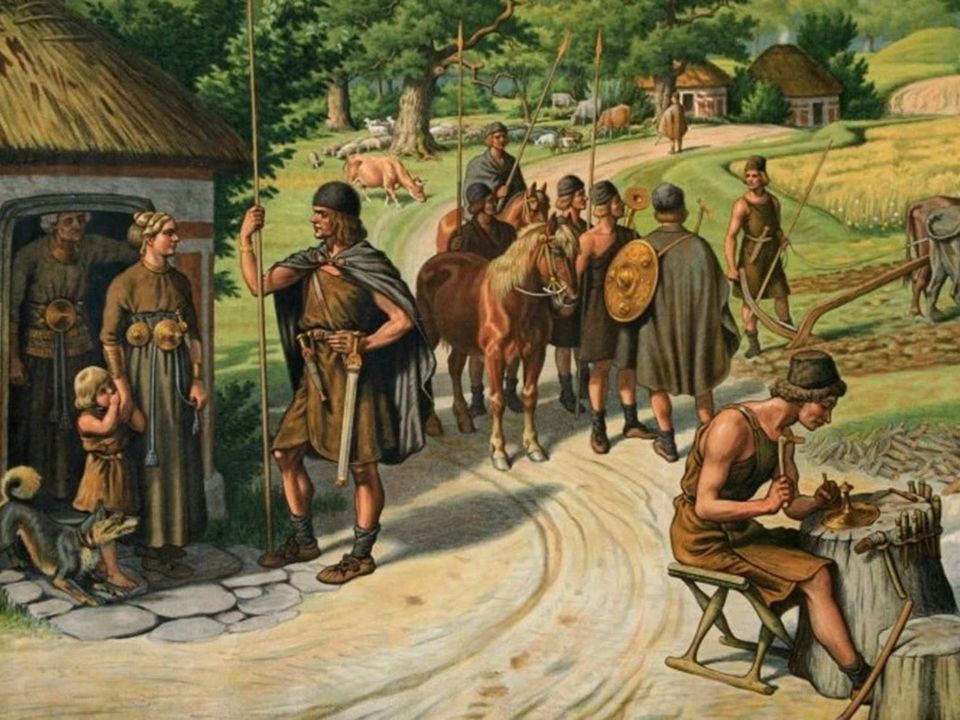The Bronze Age

After the Stone Age had ended, a new age began; The Bronze Age. The Bronze Age was a time of prosperity for humans, as they found better ways to farm and hunt. However, the first coordinated conflicts happened due to the Bronze shortage. The Bronze Age ended suddenly due to unknown reasons, though historians have speculated several of them.
A late Stone Age man once said to his child that he should use stone tools like their ancestors. The child gleefully lisped that he would rather make his tools from the strange metal used by a neighbouring village, which is infinitely better than stone tools. The father took the boy outside and faced the setting sun. “What you intend to do will change the world”, said the father.
It might be ironic to know about, but Bronze was not the first metal to be wielded by man. Instead, Copper holds that claim to fame. However, it was not long before people realized that copper had two significant downsides; it was soft and not very durable. As other metals such as Gold and Tin came into use, people developed Bronze, an alloy of up to 90% Copper and 10% Tin, though this was not the only type of Bronze to conjure up. Aluminum Bronze, Zinc Bronze, Bismuth Bronze, Phosphor Bronze and even Arsenical Bronze were all used. In fact, Arsenical Bronze was the first type of Bronze to be manufactured, and it was only later that Tin Bronze was used. Nevertheless, once Tin Bronze arrived on the scene, it quickly replaced Arsenical Bronze and became the most widely used metal in the history of humanity until 1200 B.C.
Archaeologists and historians suggest that the transition of copper to the Bronze took place at approximately 3200-3100 B.C. By the transition came to an end in 3000 B.C, a new age had started; The “Bronze Age”. It marked the end of the Stone Age around 3500 B.C, and gave way to the Iron Age at 1200 B.C or possibly later. Different civilizations entered the Bronze Age at different periods, and they developed early writing, irrigation systems, the potter’s wheel and the wheel. The Sumerian civilization of Mesopotamia was among the first people to use the Bronze. The Babylonians followed suit, and after that, the Assyrians possessed the Bronze. Mediterranean Europe entered the Bronze Age in 2300 B.C. The ancient Chinese were far behind compared to the other civilisations to enter the Bronze Age. They fashioned Bronze chariots, tools and ships fastened with Bronze bots around the reign of the Shang dynasty in 1600 B.C.
The Bronze Age came to an abrupt end at around 1200 B.C, in the Middle East, North Africa, Mediterranean Europe and other major Bronze Age-era civilisations. Historians currently do not know for sure about what exactly brought the demise of the Bronze Age, but many believe that sudden, violent, natural and cultural disruption were the major culprits. Though Bronze’s time in the spotlight might be over, it still has many uses and is utilized even in advanced countries. Even if it’s weaker than modern day steel, it still resists corrosion better and is an excellent conductor of both heat and electricity. A typical Bronze Age-era village is the forerunner of today’s communities, as the introduction of Bronze tools meant that people could hunt and farm with higher rates of efficiency, enabling villages to support more people and allowing a population increase. The Bronze Age also marked the start of the reign of metals as the most important material in our daily lives.
The now old-father peered at his now adult son smelt a sword in the metal-works hut at the village. The son said that he had made every tool from Bronze, and led his father deeper into the hut. Inside was a whole collection of Bronze tools, weapons and ornaments. The father’s aged eyes shone with pride.
References
Facts about Bronze itself are based on: https://en.wikipedia.org/wiki/BronzeFacts about the Bronze-Age are based on: https://www.history.com/topics/pre-history/bronze-age
Author biography
Ahmed Shayaan Anwar, 14, is extremely enthusiastic about reading, science and nature, especially marine life. Astronomy and stargazing hold a special place in his heart. However, he does not hesitate to play computer games. He is one of the few students lucky enough to be handpicked by Professor Ugail for his first Leaders of Tomorrow programme of theCircle by Ugail Foundation.

Cite this article as:
Ahmed Shayaan Anwar, The Bronze Age, theCircle Composition, Volume 1, (2021). https://thecirclecomposition.org/the-bronze-age/
